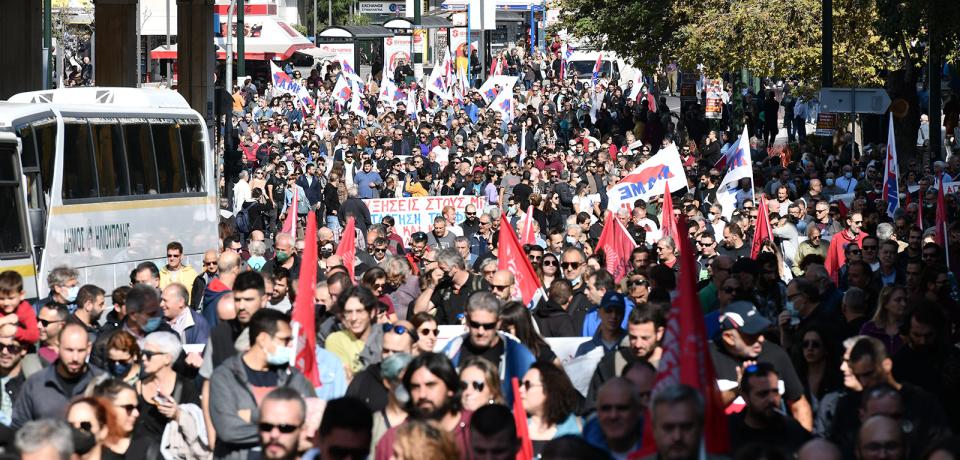
After 10 years of memoranda, the current economic crisis is even harsher in Greece, especially since the only concern of the ultra-neoliberal government of Mitsotakis is to sell off the public sector to the private.
Mitsotakis’ policy is also easy money without sustainable jobs (summer tourism), energy decisions without an overall plan: authoritarian implantation of wind farms for the sole profit of crony bosses and with the sole effect of massive local mobilizations, as in Euboea last week.
Overall, the situation is tragic for a large part of the population: record inflation (12% in September), skyrocketing energy and commodity prices, and this without any prospect of real recovery. Of the 23 regions of the European Union where youth unemployment exceeds 30%, six are Greek, and three million inhabitants (out of 10.7) are at the same time at risk of poverty and social exclusion. Faced with this, the staging of the “cheap housewife’s basket” by the far-right minister Georgiadis is considered as ridiculous as it is vain.
Surge of social anger
As various mobilizations show, anger is swelling in the face of a government that only serves the rich and that sinks into a logic of violent repression but also paranoid policing: the telephone tapping of the Mitsotakis circle targets not only the militant left and reformist or centrist politicians, but also the heart of the right, including one of the pillars of the regime, the creepy owner of two of the main pro-government newspapers!
The crisis of the right may not last but will weaken the government in the face of social pressure from the street. Indeed, the GSEE (the single private sector confederation) and ADEDY (the single public sector federation) were forced to call a general strike on 9 November, to demand a real increase in wages, the restoration of collective agreements and the abolition of anti-union laws. The strike was massive, and the demonstrations very significant throughout the country: in Athens, the police counted 20,000 demonstrators, our comrades from NAR up to 30,000; we could count more than 15,000 with PAME (the trade union current of the KKE, with a massive but rather dull procession), a very dynamic 10,000 with the rank-and-file unions supported by the radical and revolutionary left, 3,000 to 5,000 with the GSEE alongside which Syriza made a return to the streets.
But as always, three processions avoiding each other, and therefore an absence of unitary dynamics, risks offering as the only alternative perspective to the right a future Syriza-Pasok government to “better manage” the crisis of capitalism. Building in the struggles the united front to render credible the only real alternative, a break with the murderous law of the market, is urgent!
17/11/2022
Translated by International Viewpoint from l’Anticapitaliste.